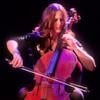
Every two years, the Rubin Institute for Music Criticism convenes in San Francisco, teaching music students across the U.S. about music journalism. SF Classical Voice has partnered with the Rubin Institute to give the program’s top writers more experience in the field with an internship. This year’s Rubin winners, Emery Kerekes and Lev Mamuya, will be with SFCV for six months, reporting from New York and Boston, respectively.
January is an avant-garde month in New York City. Cutting-edge playhouses present festivals of world premieres. Conferences for forward-thinking arts professionals converge. The New York City mayor’s office even gets involved in JanArtsNYC.
When the Prototype Festival began 10 years ago, it filled the month’s near-empty niche of new opera and musical theater — most of NYC’s winter festivals focus on straight theater. This year, some of Prototype’s seven offerings were squarely operatic; some defied such clear-cut categorization. But they all had one thing in common: They looked into the future of the opera-theater medium, taking risks that leapt across disciplinary boundaries.
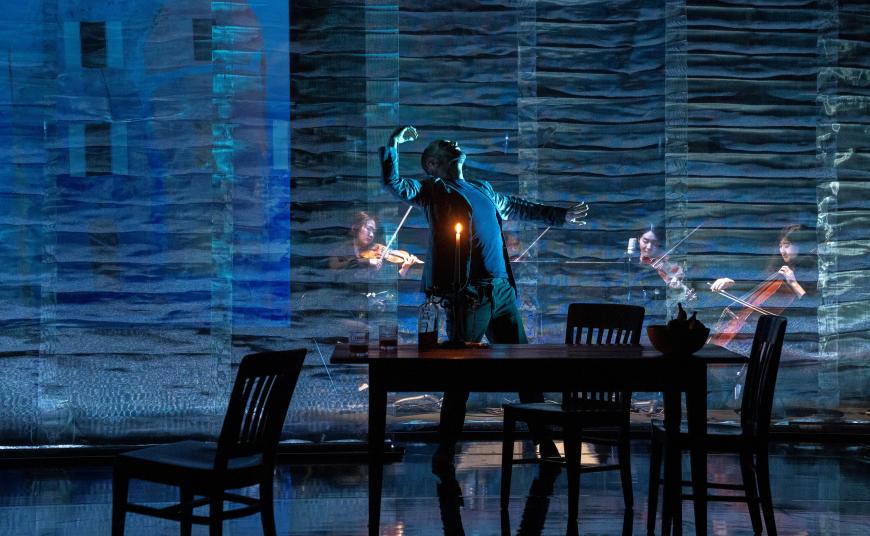
Unlike some of JanArts’ other events, Prototype is not a marathon watch-until-you-drop affair. In fact, it’s usually barely possible to see two shows at the stalwart avant-garde opera festival in the same day. This year’s venues formed a large rectangle through parts of Lower Manhattan, where subway travel only saves a few minutes over walking. And with some matinees extending well past sundown, you’d have trouble catching an evening performance after.
But that doesn’t mean the craziest of us didn’t try.
On Jan. 14, the penultimate day of Prototype’s first in-person festival since 2020, one production team presented a matinee double bill of new chamber operas by Irish composer Emma O’Halloran at Abrons Arts Center, a cozy, 100-year-old brick playhouse. Fifty blocks north, another crew mounted a premiere by David Lang at the Japan Society, just a stone’s throw from the United Nations’ sprawling East Side headquarters. I was not the only audience member who made it to both.
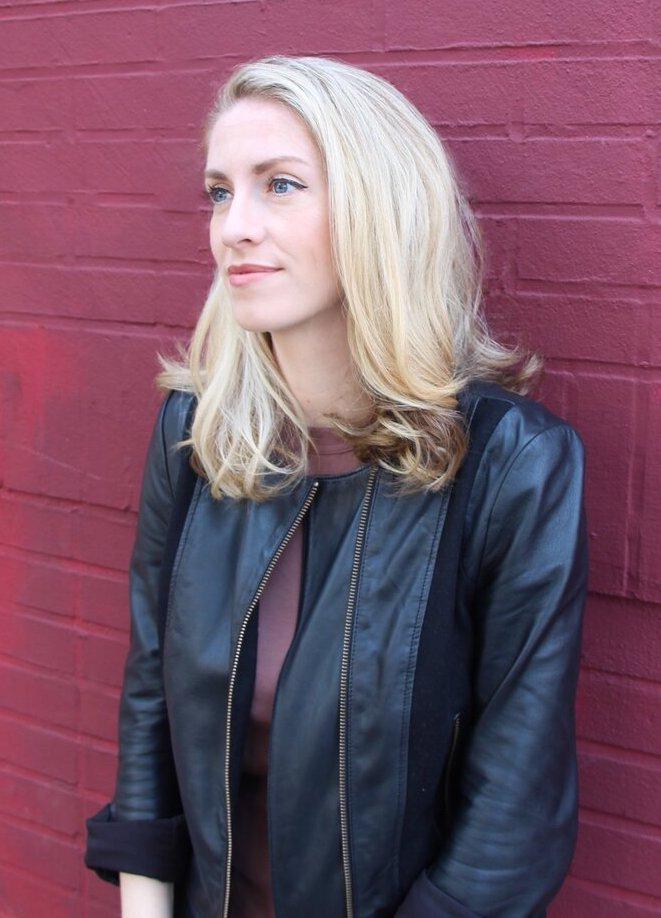
O’Halloran composed Mary Motorhead as the final-round challenge of Beth Morrison Projects’ (BMP) annual Next Gen competition. (Morrison’s powerhouse production company sponsors Prototype in tandem with the SoHo venue HERE.) The piece won O’Halloran the grand prize: an evening-length BMP commission that would become Trade. Both stories are based on plays by the composer’s uncle, the award-winning screen- and stage-writer (and here, librettist) Mark O’Halloran. The production was a joint effort by BMP and Irish National Opera, with contributions from Trinity Church Wall Street — the parish’s fabulous new-music ensemble, NOVUS NY (conducted here by the dynamic Elaine Kelly), occupied the pit.
The two tales juxtapose manifestations of internalized human suffering, testing the audience’s empathy with deeply flawed characters. In Mary Motorhead, a convicted murderer recounts the gritty life that led her to drive a steak knife through her husband’s head. For half an hour, the title character rationalizes her gruesome actions from a drab prison block, seeking her own understanding and absolution as profoundly as she does the audience’s.
Mezzo-soprano Naomi Louisa O’Connell played Mary Motorhead with intense, wide-eyed mania. Her light, clear voice floated through Mary’s few sweet memories of young love, gaining resigned grit as those anecdotes went sour with single turns of phrase — “Give a girl enough hope, and she’ll hang herself.” O’Connell often taunted the audience, almost daring it to sympathize with Mary’s difficult life, but those assured, swaggering jeers swiftly (and consistently) became rabid outbursts that drew nervous laughter from around the room. Even Mary’s aggressive sniffs of breath teemed with unbridled spite.
Where Mary Motorhead seeks amnesty beyond the confines of the fourth wall, the two characters of Trade — a young, closeted male prostitute and his older, closeted male client — seek the same in each other. The two have met before, the audience learns, though it seems that they just now begin to realize the kinship of their situations. Throughout the piece, they forge a tenuous, mildly perverted father-and-son bond as they recognize bits of themselves in the other.
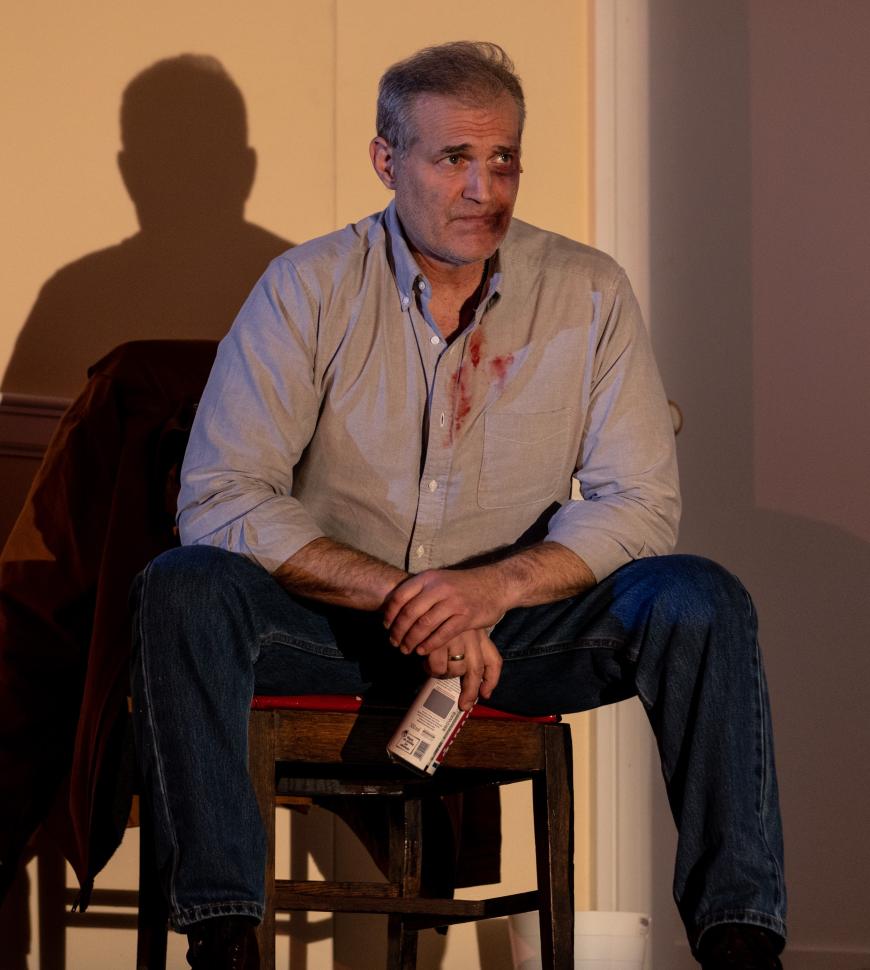
In Trade, Broadway star Marc Kudisch and BMP veteran tenor Kyle Bielfield displayed an unsettled but ultimately palpable chemistry. Kudisch, as the elder client, trod the thin line between distance and vulnerability, his rich baritone often choking up with the character’s repressed pain and embarrassment. Bielfield was outwardly standoffish as the young prostitute, though he soared boldly through his higher passages. The glimmers of fear and woe that occasionally escaped his stony facade had a chilling air of desperation.
At times, O’Halloran’s scores laid placid underpinnings for speechy “recitatives” of sorts; at others, they drove with a slightly off-kilter pulse. O’Halloran didn’t shy away from jump scares — at Mary Motorhead’s first true mental break, a klaxon-esque guitar deafened with ear-splitting distortion. The amplified instruments of her orchestra wove seamlessly into the overtone-rich electronic sound design of O’Halloran’s fellow composer Alex Dowling to create a backdrop enriched with the velvety muffle of dampened synth drums.
Ultimately, each libretto kept an iron grip on its piece’s forward motion. Mary Motorhead’s monologue tumbled forward in a colloquial register, never without dramatic direction. Trade, on the other hand, mined into a purposeful, authentic awkwardness. Tense silences dotted the conversation between prostitute and client as one-word whats and yeahs left voids where the music craved a full sentence. It was a bold decision and an expert manipulation of a medium that so often teeters into unintended awkwardness.
Director Tom Creed staged the two shows as foils. Where sudden movement abounded as Mary Motorhead leapt across the stage, Trade was a slower-moving affair, the two characters largely staying in their respective corners. Jim Findlay’s stark sets made ingenious use of plaster and stucco. Mary Motorhead’s single-doored prison block popped with the dark powder blue of the inmate’s uniform; the off-white motel room of Trade looked even dingier under sickly yellow lighting (designed by Christopher Kuhl).
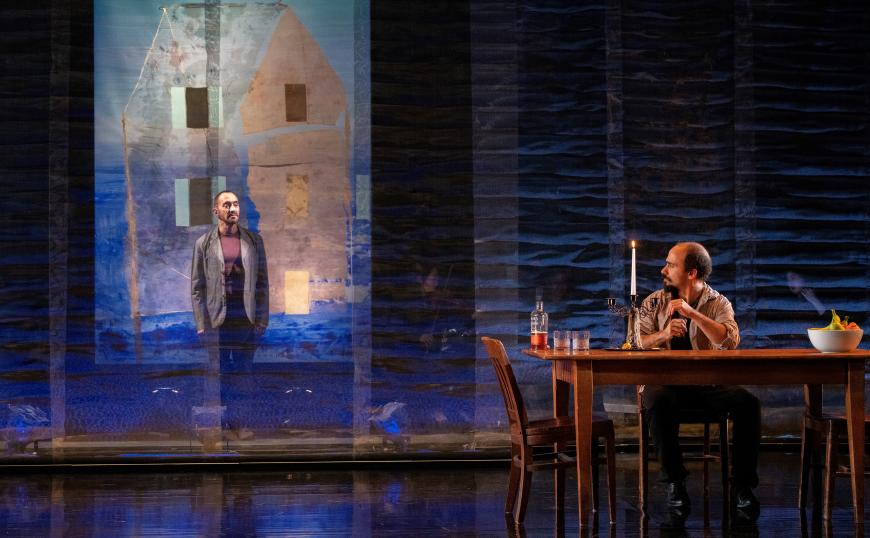
David Lang’s note to a friend probes similarly troubled psyches. He based the hour-long show on three works by the early 20th-century Japanese author Ryūnosuke Akutagawa, most notably the note he left a close friend before his suicidal overdose at age 35. Unlike O’Halloran’s double bill, this is not a piece that gut-punches with horror and desperation. Rather, Lang examines the suicidal mind with calm procedure. As one line of dialogue has it, “People who kill themselves don’t usually tell you what they think about killing themselves.”
The show was a slight letdown after O’Halloran’s compelling stories. The pace of note stayed constant for a full hour, as did the sound world. Where O’Halloran lent tension, nuance, and contrast, Lang superimposed a singsongy libretto onto his customary minimalist musical language. And without dramatic jabs, the narrative arc became slightly flat.
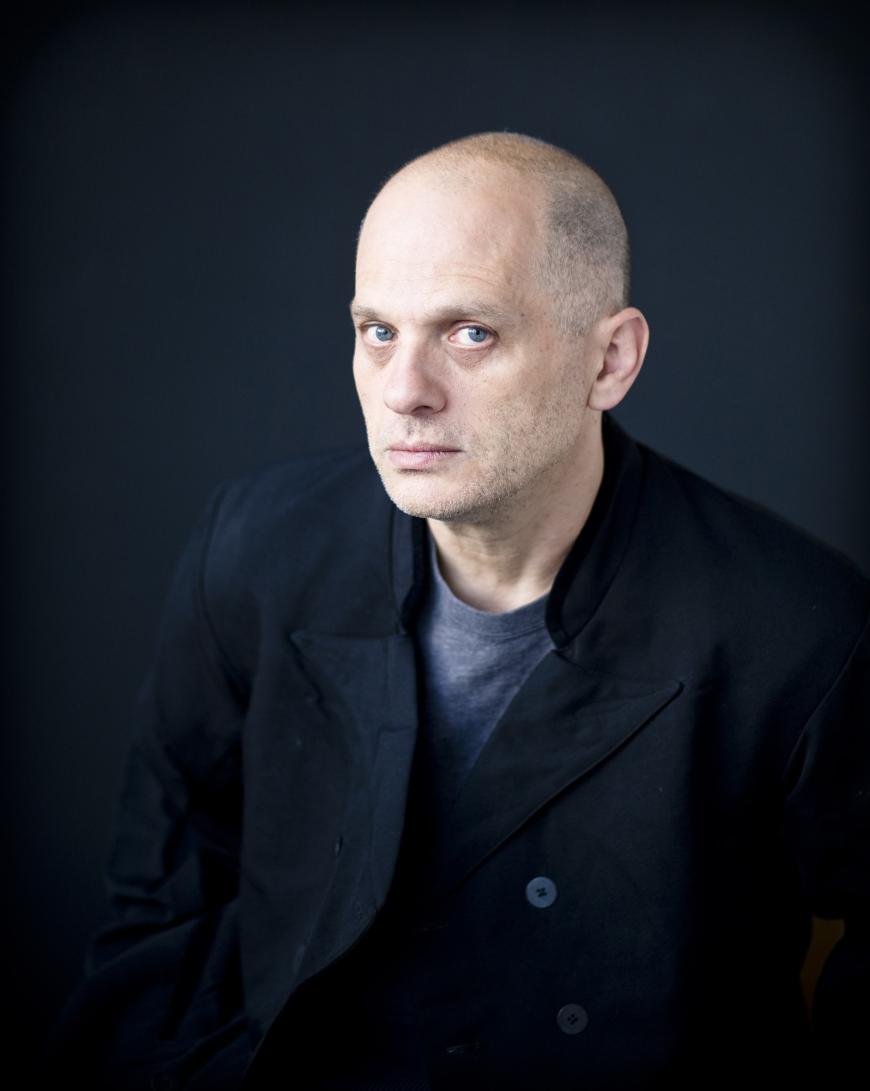
Avant-garde titan vocalist Theo Bleckmann played the sole vocal role, a narrator who at times stood as proxy for Akutagawa himself. Bleckmann’s performance, while not supremely in tune, had an appealing theatricality. At one point, he gave the wan, distant stares of an Ophelia; the next, the mimed laughter of a Pagliacco. He moved around the stage with yogic zen, each of his movements measured carefully through time and space.
Bleckmann’s amplified voice was accompanied from an upstage-right corner by a fabulous quartet of Japanese string players: Kyoko Ogawa and Tomotaka Seki (violins), Ayako Tahara (viola), and Ayano Kamimura (cello). At their loudest climaxes, the string players almost evoked a grand church organ, rolled chords resonating with overtones; at their quieter points, harmonics twinkled cosmically. Lang’s signature style — minimalist, ponderous, repetitive — worked decently for such a heavy subject, but the music lost distinctiveness as the opera wore on.
Perhaps the hardest job fell to Cyrus Moshrefi, the silent actor toward whom Bleckmann directed his diatribe. Director Yoshi Oida cast Moshrefi as an artist in a sparse but neat apartment-studio. His reactions were subtle but masterfully authentic, as if hearing the long speech anew every evening.



